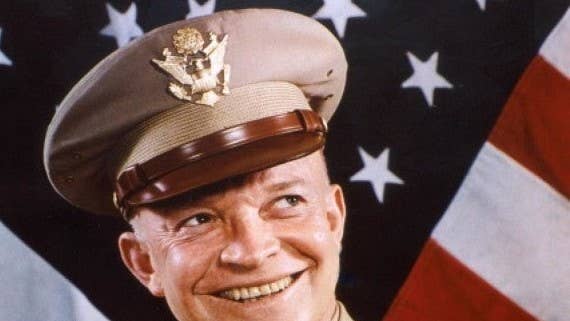West Point’s Class of 1915 is one the stars fell on

SUMMARY
Over the years, the U.S. Military Academy at West Point has graduated thousands of officers who have gone on to do great things with their lives. Two Presidents of the United States and 75 Medal of Honor recipients are West Pointers. But no single class has been quite as successful as the Class of 1915.
The Class of 1915 was comprised some of the most famous names in the history of the U.S. Army, including Dwight Eisenhower and Omar Bradley. There were 164 graduates that year and over one third, 59 total, went on to become generals, spawning the nickname 'The Class the Stars Fell On."
All told, two of them were named as five-star Generals of the Army, two others became four-star generals, seven made lieutenant general, 24 pinned on two-stars, and 24 made brigadier. To top it all off, Dwight Eisenhower was elected as the 34th President of the United States.
There were a number of factors that affected the outcome for this class. The first was the timing of their graduation. With the Punitive Expedition in 1916 and America's entry into World War I in 1917, the Class of 1915 found themselves in combat early in their careers.
Second, a career as a military officer was rather nice for the times, compared to other jobs. With the onset of the Great Depression in 1929, resignations became exceedingly rare, even if promotions were non-existent.
Finally, with the rapid expansion of the armed forces for World War II, this class of officers quickly moved into high level command positions due to their experience and seniority. The first among the class to reach the general officer ranks was also the first Puerto Rican and Hispanic to attend and graduate from West Point, Luis R. Esteves.
The two highest ranking members of the class were Dwight Eisenhower and Omar Bradley. Eisenhower quickly gained a reputation for his planning and administrative abilities and in just three years' time would advance from the rank of brigadier general to General of the Army, a five-star rank, as the commander of the Supreme Headquarters Allied Expeditionary Force. During World War II, he planned and led the invasions of North Africa, Sicily, Italy, and Normandy. Bradley would enter the war with Eisenhower in North Africa and quickly receive promotions as well. Bradley took charge of the Twelfth Army Group, consisting of four field armies and over one million men, the largest group of American soldiers to ever serve under a single field commander. Bradley would not receive his fifth star until the Korean War, when he served as chairman of the Joint Chiefs of Staff.
The class also had two four-star generals in Joseph McNarney and James Van Fleet. McNarney was originally commissioned in the infantry but then attended flight school. Under his recommendation, the Army Air Forces became an autonomous component of the Army. He would eventually become the Supreme Commander of the Mediterranean Theatre. James Van Fleet was also commissioned in the infantry and during World War II he commanded both the 4th and 90th Infantry Divisions as well as III Corps. During the Korean War, he commanded the Eighth Army. He was also one of, if not the, most decorated officers of the class, having earned three Distinguished Service Crosses, three Silver Stars, three Bronze Stars, and three Purple Hearts.
Although a number of the class distinguished themselves in combat in World War I, many members of the class did not, and would not, see combat until World War II, where they would truly distinguish themselves. A total of thirteen men from the class would command divisions during WWII. In Europe, Generals Leland Hobbs led the 30th Infantry Division, earning the nickname 'Roosevelt's SS' from the Germans and were considered by S.L.A. Marshall to be the number one infantry division in theatre.
Lt. Gen. John Leonard, who received a Distinguished Service Cross in WWI, would lead the 9th Armored Division throughout the war and during their daring taking of the Remagen Bridge. In the Pacific, Joseph Swing, who would eventually become a Lieutenant General, commanded the 11th Airborne Division. Swing was instrumental in saving the airborne divisions by chairing the Swing Board and showing their utility in the Knollwood Maneuver.
In the air, Lt. Gen. Hubert Harmon would command the Sixth and Thirteenth Air Forces and go on to be the first Superintendent of the Air Force Academy. Another Lieutenant General, George Stratemeyer, would command the air forces in the China-India-Burma Theatre of Operations.
Many of these officers retired shortly after World War II but a few continued to serve. The longest serving member of the class was Lt. Gen. Hubert Harmon who retired in 1956 after 41 years of service. The last surviving general of the class was James Van Fleet, who died at the age of 100 in 1992. Although the number of graduates each year at West Point is now significantly greater than it was in 1915 it is highly unlikely that there will ever be another class to achieve such greatness.
SHARE
